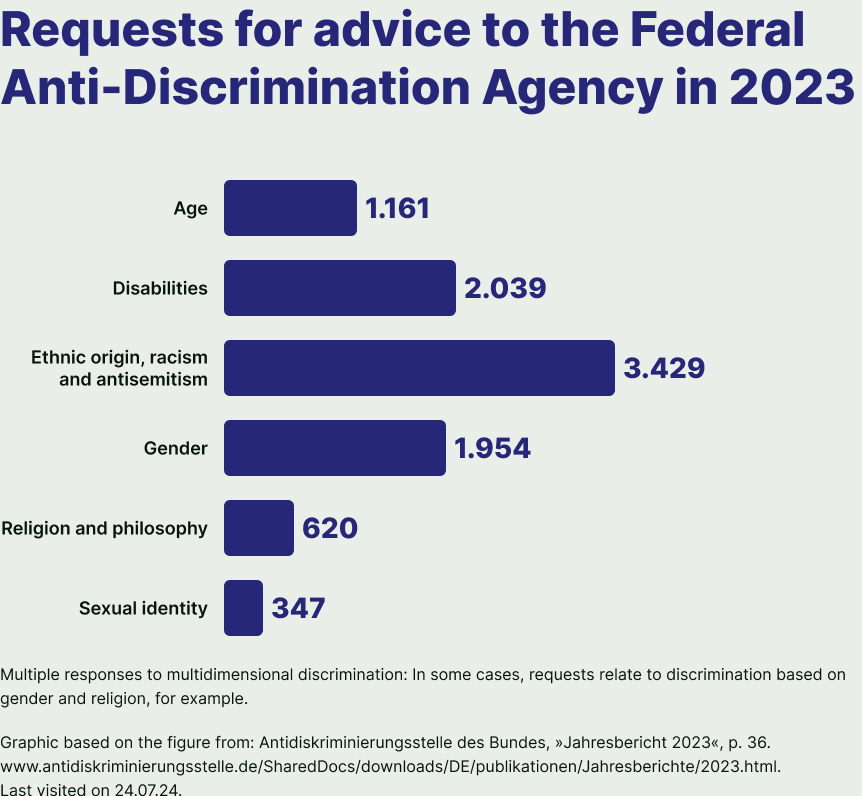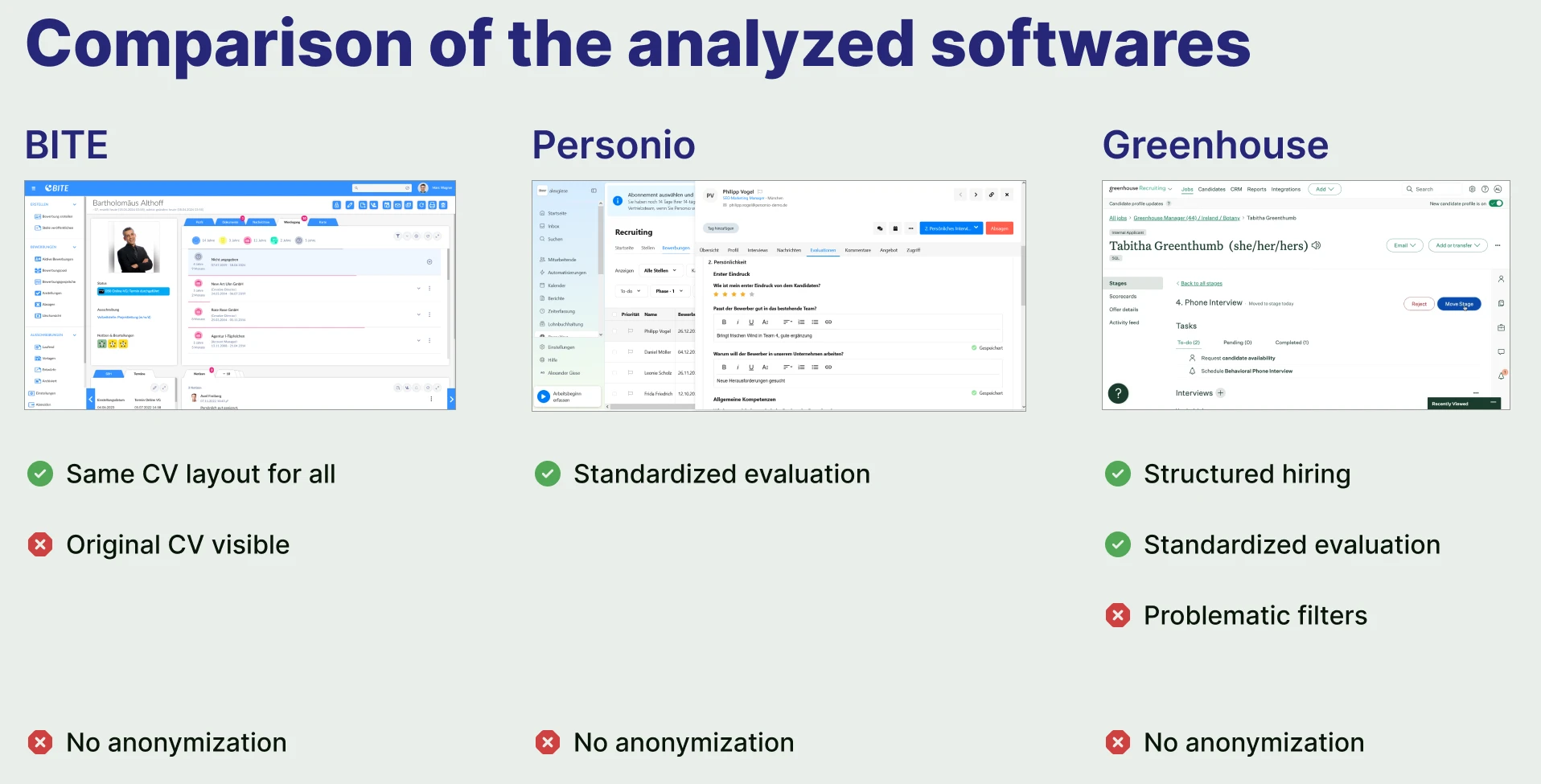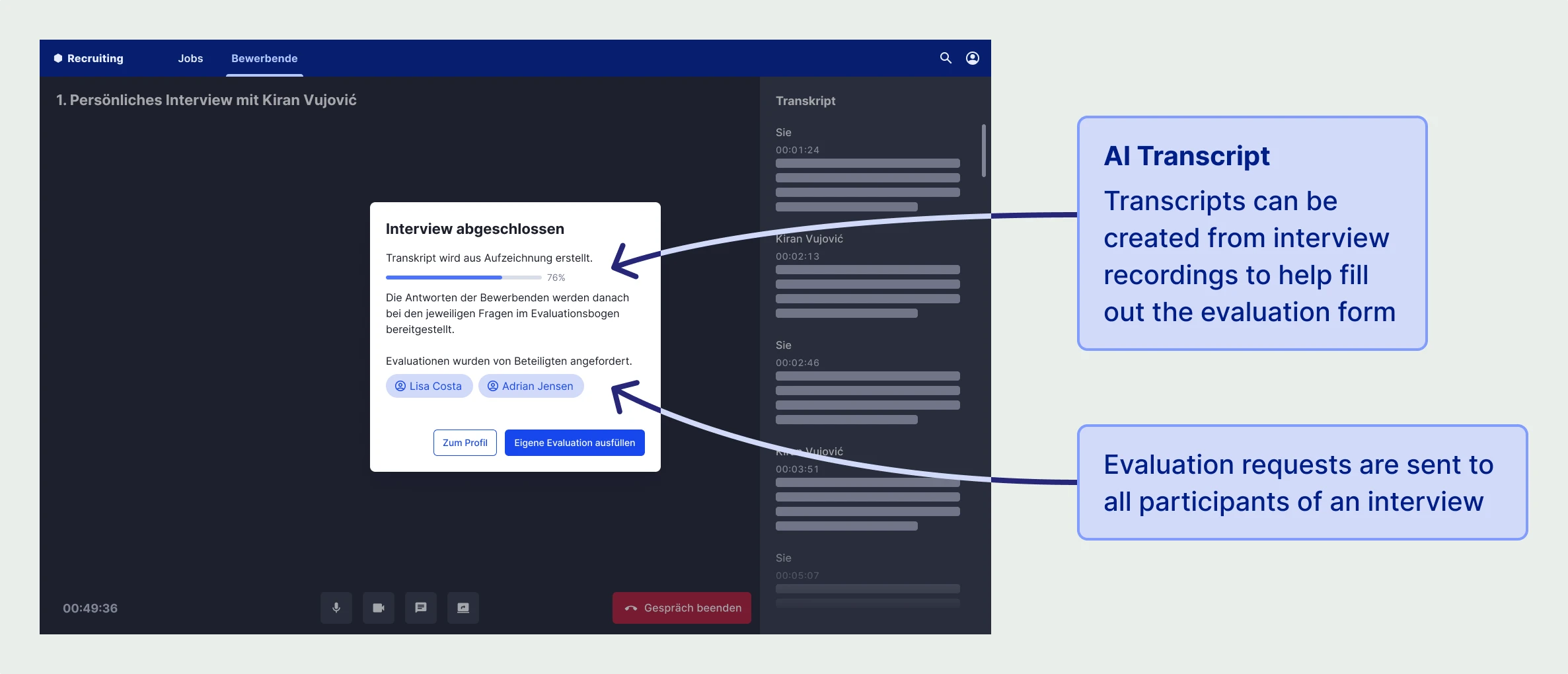UX Concept
A series of interventions in HR software to reduce discrimination and promote diversity
Skills
UI/UX Design
Expert Interviews
Focus Group Testing
Tools
Figma
Context
Master Thesis
Date
2024

I began by researching the causes of discrimination in recruiting and analyzing three HR software tools. Using insights from inclusive recruiting methods, I created series of interface interventions that incorporate anonymized profiles, positive discrimination, and AI assisted evaluations to promote a more equitable digital recruiting experience.
In Germany, discrimination in job application procedures still happens frequently, with ethnic origin being one of the most common causes.
This is why I investigated for my master’s thesis project, how HR software can contribute to supporting inclusion. My aim was to develop interface interventions that reduce discrimination and support the equitable treatment of all applicants.

First, I analyzed three recruiting software solutions to find out how discrimination occurs in the interfaces and whether it is triggered rather by the technology or by human behavior. The main findings are:

I then researched methods from literature in the fields of consulting and social sciences that can contribute to more equitable recruiting processes. The following methods are applicable to the software:

You can read more about why they are applicable or not in my master thesis below (in German)
Based on these findings, I developed my interventions for the improvement of recruiting interfaces. To test their potential for reducing discrimination, I discussed them in a small testing with the same three recruiting experts.
I developed a set of interface interventions for recruiting software to help reduce discrimination in application processes. They are based on findings from scientific literature and my own analysis of best practice softwares. In the following, I explore different approaches designed to help recruiters treat all candidates and resumes equally, and make more objective hiring decisions.
For a more detailed explanation of my concept, feel free to read my master thesis below (in German).

Applied Methods


Applied Methods



Applied Methods


To evaluate my concepts, I conducted a mini testing with a focus group of the three recruiting experts from the beginning of my research. I first used the Thinking Aloud method to check whether the screens were plausible and then asked them about the potential they see in the interventions.




The next step should be to verify in a larger testing group whether the interventions produce the desired effects. This would require a detailed prototype in which recruiters can go through the entire process for an application file.
At the same time, the effects on applicants should be investigated. Specifically, it should be tested whether applicants are actually open to stating diversity attributes.
I’m Alex, a UI/UX Designer based in Berlin with a focus on interaction design and service design.
I enjoy designing interfaces for complex processes, HR topics and I am passionate about great usability and knowledge management.